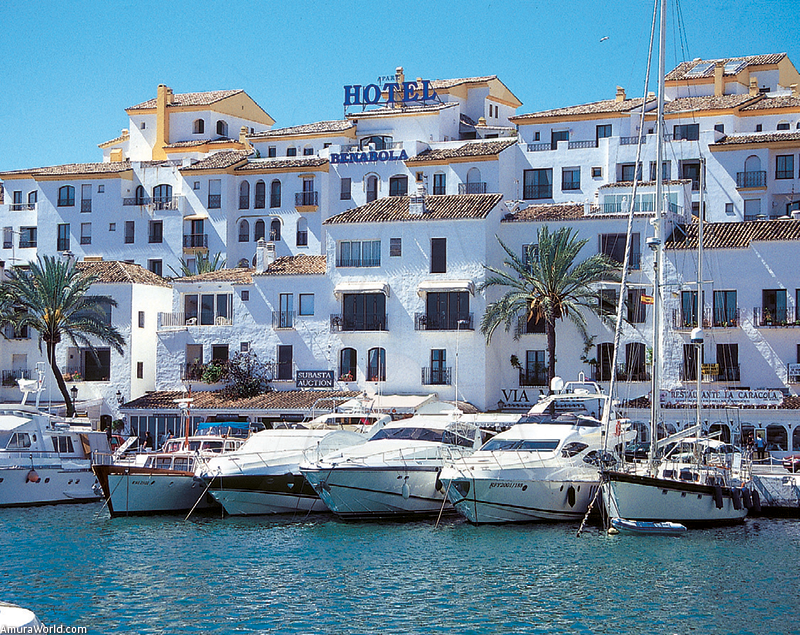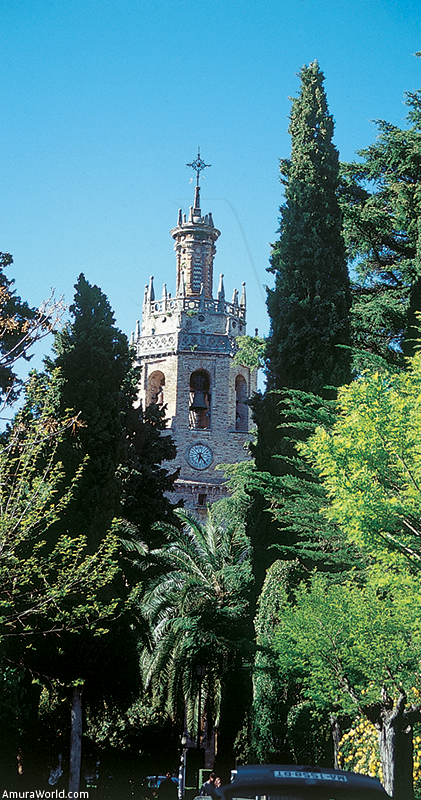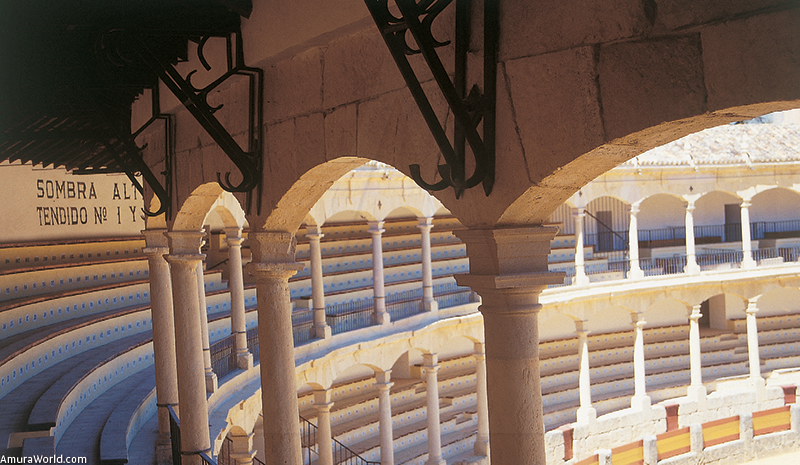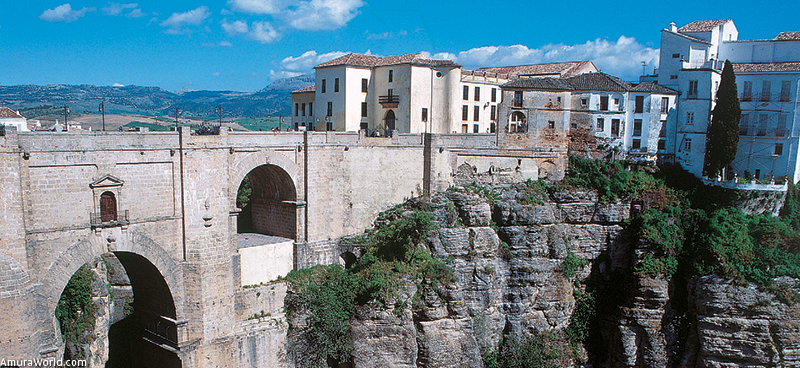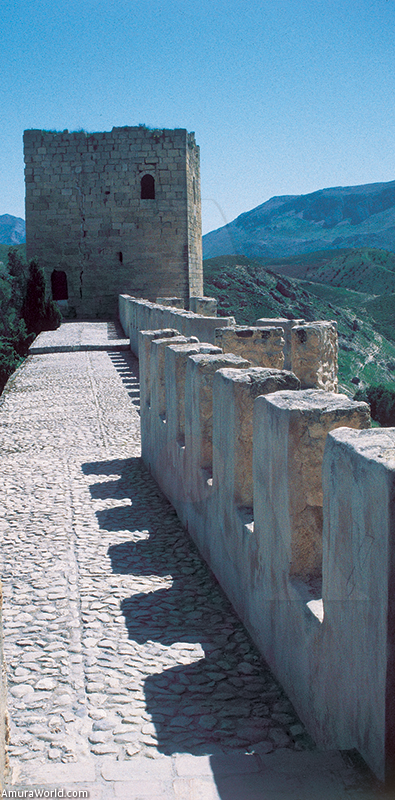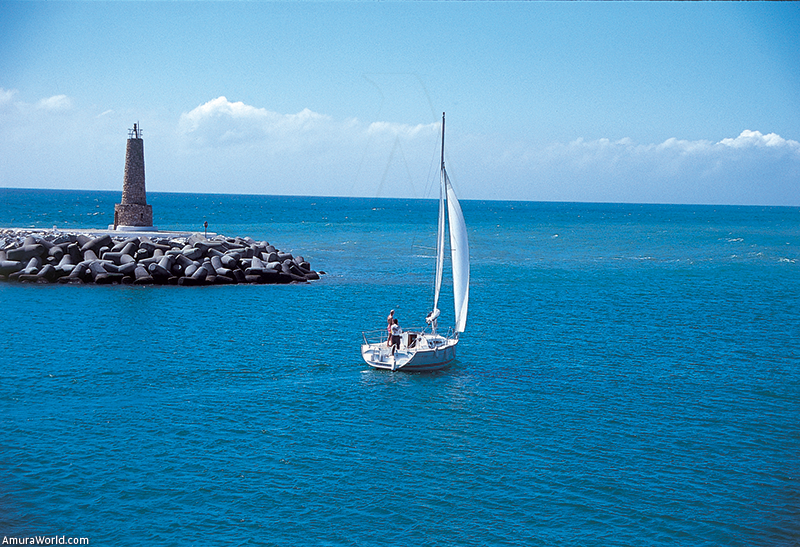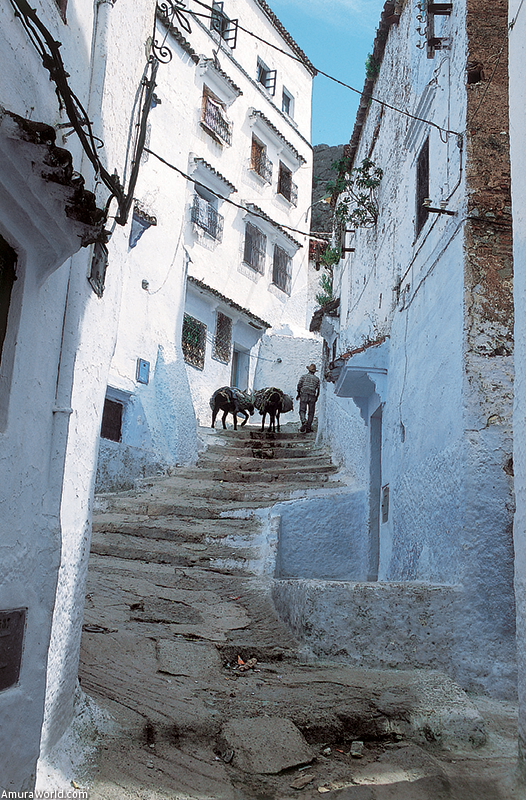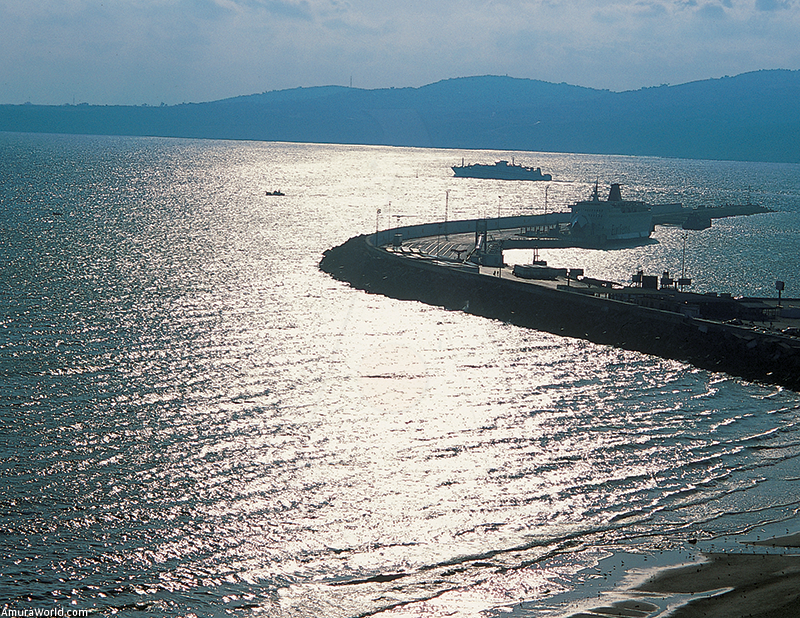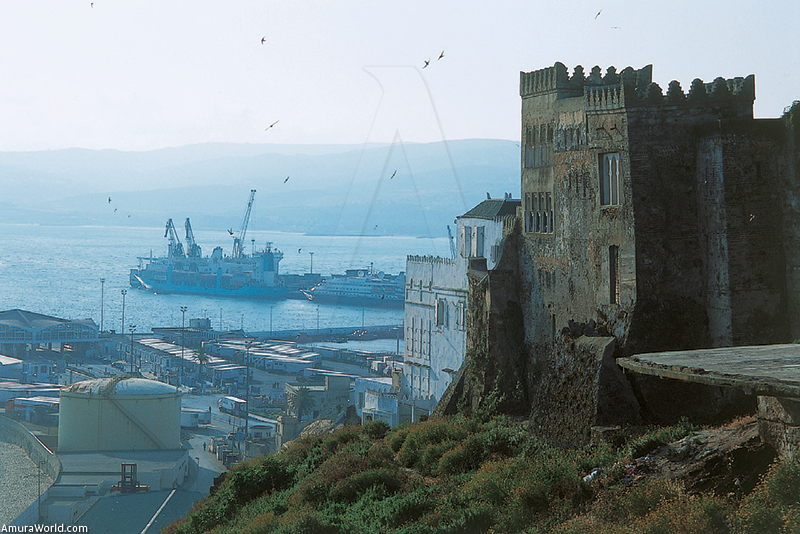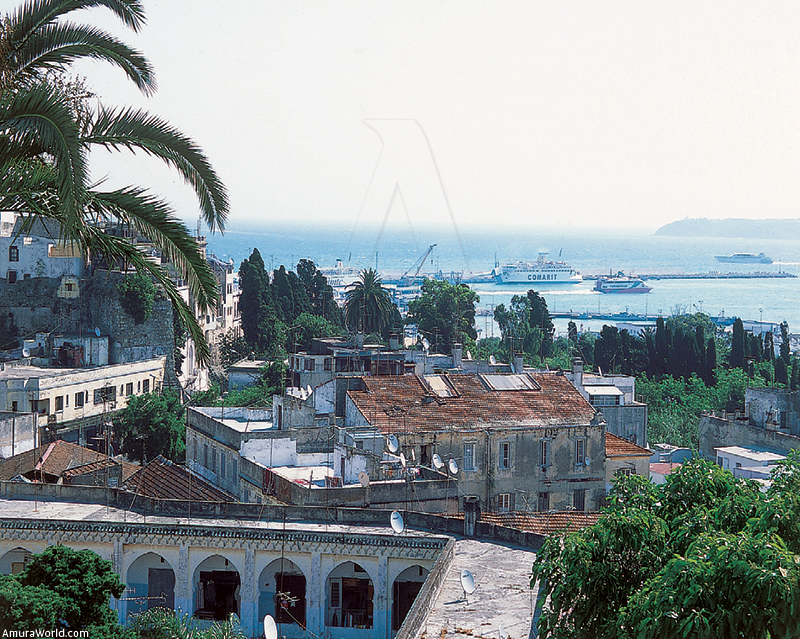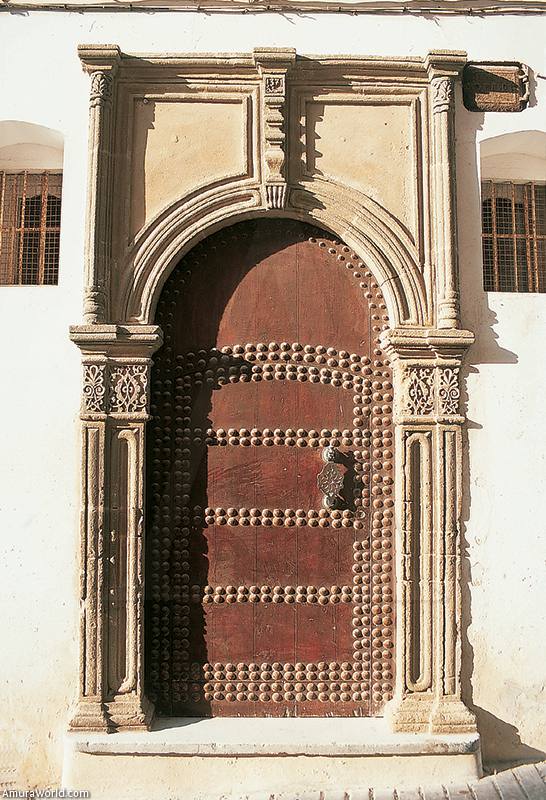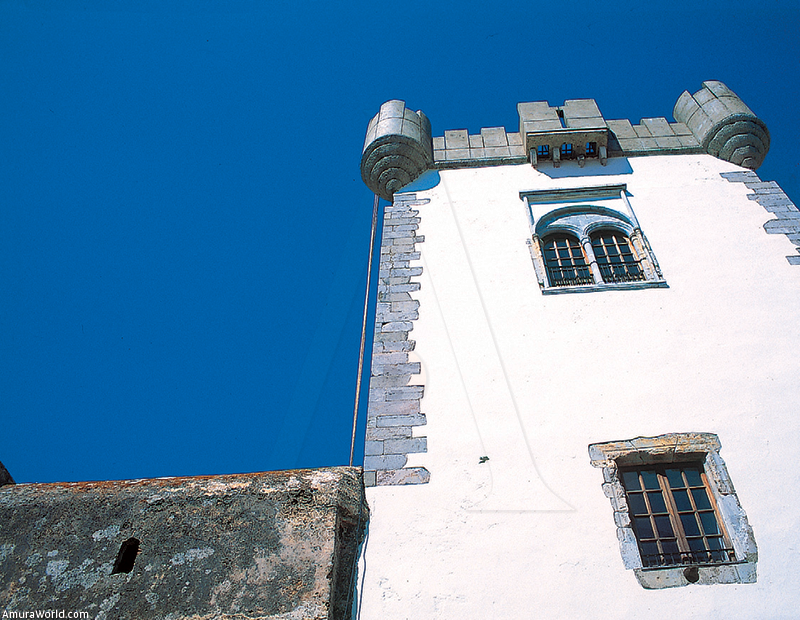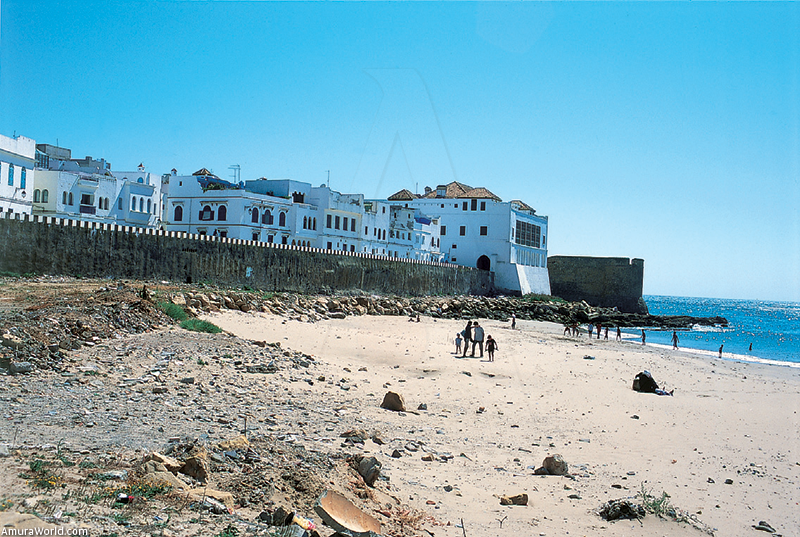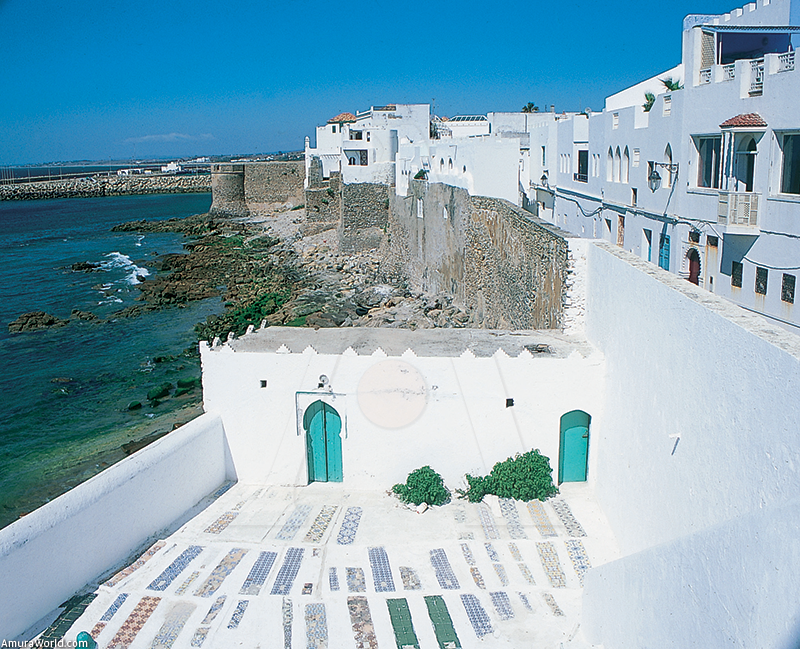Different and intrincate cultures
Port Banús, near Marbella, is the most elegant marina on the Spanish coast, where boats varying in design and size are proof of wealth and fame. The impressive yachts of Saudi Arabian princes, European nobility and entertainers, anchor here. On the dock you run into famous Spaniards out for a stroll, terraces proudly hosting the most beautiful and well dressed women on the Costa del Sol, elegant men wearing the latest, exquisite fashions and flashy cars…all of which give this place its special charm.
This region, which boasts 300 sunny days a year, invites travelers to enjoy the sea, sail on the peaceful waters of the Mediterranean and delight in the color and warmth of the Andalusian summer. Marbella is the “city of the white night”, because of the countless lights and its dynamism. The tapas bars are full, the flamenco “bodegas” are overflowing and the discos beat to the rhythm of the DJs. The party never ends before daybreak. The best golf courses are located on the Costa del Sol and dining on seafood and salted fish at “Pepe” is a must.
Inland… Ancient
Tracks While Amura’s sailboat awaited us at Port Banús, we set off to explore the region. While we strolled along Marbella’s narrow streets, filled with boutiques and restaurants, we were delighted to constantly run into someone famous. We visited the Nuestra Señora de la Encarnación baroque church and the third century Paleo-Christian Basilica with its cross-shaped baptismal font. In San Pedro de Alcántara we saw the famous Roman baths and in Málaga we explored the Alcazaba, a sixth century cathedral, as well as palaces and churches. We also went to a fashionable “corrida” at the La Malagueta Plaza de Toros (bullfight ring) built in 1876.
At Port Banús you will find the impressive yachts of Saudi Arabian princes, European nobility and millionaire entertainers while famous Spaniards stroll on the dock.
Thrilled by the region’s beauty, we toured the “white towns” of the sierra. Ronda, about 50 kilometers away and 744 m above sea level, is nestled on a plateau split by a canyon 100 m deep and 70 m wide. This is the famous Tagus which divided the city in two parts that are joined by the spectacular 18th century Puente Nuevo (New Bridge). The Santa Maria la Mayor Cathedral, with Arabic elements, the Alcazaba, the Almocábar door and the Casa del Rey Moro (House of the Moorish King) are marvelous examples of Ronda’s Muslim era, one of Andalucia’s last bastions, reconquered by Christians in 1485. The Renaissance-style Salvatierra palace amazes with its American Indians carved on the facade and the Mondragón palace which has two mosaic patios with Mudejar-style stuccos.
We were awed by the Plaza de Toros. Inaugurated in 1784 by the Real Maestranza, it is one of the oldest and most important in Spain. Every September, the Corrida Goyesca relives the age of Goya. Seated in the boxes are celebrities, Spanish nobility as well as bullfighting aficionados. It is a awesome show, a Rondastyle fiesta brava, as bullfighting is also called, but more austere than the Sevillian school, created by Pedro Romero (1754-1839), grandson of Francisco Romero, who wrote the rules for bullfighting.
One of the best restaurants for Andalusian cuisine is the Mesón del Escudero, an ancient manor with a beautiful view of the Tagus. We recommend the solomillo de cerdo con champiñones (pork with mushrooms) accompanied by Málaga or sierra wines.
We visited the towns of Grazamela, with its typical, well-preserved architecture surrounded by the pine forest of the Sierra de Grazamela Natural Park; Gaucin, with a fabulous view of the rock of Gibraltar and the Moroccan coast; Zahara de la Sierra and its castle, Setenil with its homes built on the cliff overlooking the Trejo River, and Arcos, a beautiful city located on the rim of a canyon. We also discovered Antequera, 577 m above sea level, with its ancient downtown area, its Alcazaba, a true jewel of the sierra, the Nuestra Señora del Carmen church with its beautiful baroque altar, which sets it apart from other churches in the city and, in the Parador we enjoyed excellent Andalusian cuisine prepared with the finest olive oil. We toured Menga Dolmens, Viera and El Romeral and El Torcal, a natural park where we trekked among strangely shaped rocks.
Behind Gibraltar’s Door
After all the partying and good food, Amura’s sailboat took us south to discover a more peaceful world. Along the coast, the long beaches of San Pedro de Alcántara and Estepona spread out along the base of the Ronda and Bermeja mountains. They go on till they die in the sea, forming the beautiful rock of Gibraltar, standing guard over the strait of the same name.
Gibraltar is a multifaceted mountain. An English colony in Spanish territory, it is considered one of Hercules’ pillars and the only place in the country where you will find a community of monkeys. Its name is of Arabic origin: in the eight century, when Commander Tarik crossed the Strait to conquer Spain, he called it “Djebel Tarik”, Tarik’s mountain. It protects the enormous bay that guards the port of Algeciras, where ferries sail between Spain and Morocco.
We crossed the Strait between Gibraltar and Ceuta, the narrowest part. Ceuta is a unique Spanish city in Moroccan territory. Located in the folds of mount Hacho, it is a commercial port with important military activity, a small marina and the constant coming-and-goings of ferries crossing the Strait.
Passing Almina Cape you find long, windy Smir beach where the hotels and condos beckon visitors to spend their summer vacations, especially Martil, Smir and Restringa. At the end of the day we reached the pleasant Cabo Negro marina, protected by Riff Mountain. Once we were settled and enjoying a fish tajine we explored the discos, restaurants, hotels and bars. It is a Moroccan-style Costa del Sol.
We decided to anchor at Cabo Negro to explore the surroundings, especially the town of Chefchaouen, or Chaouen, as it is commonly known. It is a place that has conserved its charm. Founded in 1471 by Moulay Ali Ben Rachid to attack the Portuguese who occupied Ceuta, Chaouen became prosperous thanks to the Muslim and Jewish refugees who escaped from Granada in 1494. The small village started to grow as homes with balconies, tiled roofs and whitewashed walls were built. Then, the town was more Andalusian but in the 30s they decided to paint the walls blue, which is now the traditional color. Christians, threatened with death, were not allowed into the town until the arrival of Spaniards in1920, and the language spoken was a variation of medieval Castilian.
It is a magical place with blue streets, vines shading the small plazas, the entrances to the houses with their mysterious doors that open to reveal hidden patios bathed in blue lights that make the walls seem covered with ice. The ancient olive, fig and fruit trees enliven this strange setting, where mules carrying barrels of olive oil slip on the smooth steps, old people walk carefully leaning on their cane, friends chat in the shade, solving the world’s problems and women crack open their doors to hear their neighbor’s gossip.
Tangier and the narrow streets of the Medina are a mystery novel: its past and present weave and unweave intrigues and attract all with its diverse beauty.
The houses and patios, decorated with tiles, are dazzling. It is one of the most mysterious places in Morocco, its unique ambiance shaded by the ancient Kasbah and protected by the mountains that surround it. The berry trees that shade the Uta El Hammam plaza date back to the time when Chaouen was famous for its silk textiles. The octagonal tower of the mosque was built in the 15th century and dominates this steep town which seems to slide down the slope of the Ras el Ma river, where women do their laundry.
The nearby towns decorate the mountain peaks with their mosques that resonate with the melancholic melody that calls to prayer, the sound echoing among the olive, cedar and cork trees. It is an ideal place from which to set out on a hike through the Riff Mountains. Along the paths there are women harvesting wheat, children taking care of goats, men pulling a mule that is carrying his wife, wearing a traditional hat. These are the scenes you will find in these superb mountains… part of the magic of northern Morocco.
Tétouan is a city near Cabo Negro. Established in the third century B.C., it was destroyed by the Romans, rebuilt by the Merinids in the 14th century, served as a refuge for pirates, was, again, destroyed in 1399 by Henry III of Castile, reconstructed in the 15th century by the Muslims and Jews who emigrated from Granada and, finally, in 1912 named the capital of the area occupied by Spain. The Medina, with its beautiful tile-decorated homes, shops and mosques, brings Andalusia to mind. Spanish is spoken here as well as Arabic.
Finding people in the cafes or the Hamam, bartering in the zoco, admiring the view from the Kasbah or visiting the Sultan’s palace are pleasures offered by this city that embraces civilizations.
We sailed from Cabo Negro, past Port Maril –which was blocked by Spaniards in the 17th century to prevent pirate attacks—, by Ceuta and entered the Strait of Gibraltar, where Europe and Africa’s coasts seem to be part of the same continent. The coast is beautiful with cliffs that drop into the sea, the town of Benzu, where the ruins of a Phoenician city were found, with a beach of stone and coral that is thrown out by the sea. The Djebel Musa, 842 m above sea level guards the Strait, only 15 km from Tarifa, the southernmost tip of Spain. In this area the winds can be treacherous and the sea choppy so it is important to check on the weather before sailing. Some dolphins accompanied us when we passed Ksar Es Seghir, a small fishing port protected by a Portuguese wall and castle on whose side an enormous commercial port is being built to help alleviate the crowded port of Tangier. Finally, we passed Cape Malabata, guarded by a lighthouse, and we entered magnificent Tangier Bay, where the white city reigns. We found shelter in the small port, that shelters fishing boats as well as sailboats, next to the large port that is frequented by the boats that cross the Strait to Algeciras.
Mythical Tangier
As soon as you step on dryland you encounter a unique world. Tangier, a thoroughfare between Europe and Africa, is a place marked by centuries of intrigue and by its geographic location. Tangier and the narrow streets of the Medina are a mystery novel, the great avenues of the new city are a meeting place of people who have arrived from all over the world: clandestine emigrants who await their turn to cross the Strait, intellectuals who live to the beat of the city, rich Europeans who purchased ancient homes where they receive their guests and throw spectacular parties, writers who look for inspiration in every corner of the Medina, painters who require the special light of Tangier, that great cosmopolitan city.
And so, among others, we recall Ibn Battuta, a geographer/traveler who was born here in 1304, Paul Knowles, the North American writer who lived here for many years, and Tahar Ben Jelloun, the renowned Moroccan writer who spent much time here.
The narrow streets of the Medina rise, like a mysterious labyrinth, to the Kasbah with its beautiful wooden doors, white facades, lookouts with a view of the port or the Strait, jewelers, clothing shops, exquisite pastry shops, cafes where men sit and watch time go by, encounters filled with fascinating faces. Tangier captivates with its people and streets, where the wind hides or the sun passes by to light some mysterious spell. Finding people in the cafes or the Hamam, bartering in the zoco, admiring the view from the Kasbah, visiting the Sultan’s palace… Tangier is a magical city that has lived in the crossroads of civilization.
This is where the Phoenicians and Greeks established a small enclave, where Hercules killed the giant Antae and conceived Sophax with the widow Tingis (the origin of the name Tangier). During the Roman empire, Tingis was the capital of Tingitan Mauritania and, through the centuries passed through Spanish, Arab, Portuguese, English and Moroccan hands until, in 1923, Tangier was declared an “international zone”, controlled by European resident representatives. It was a cosmopolitan city, where anything could happen, and attracted all kinds of people, from the aristocracy to mafias. Tangier was very intriguing. Once again Moroccan, thanks to its independence in 1956, the ciy conserves a strange side that still exerts a pull. Sometimes the winds carry rumors from Europe or Africa that blend together in the international streets.
Spartel Cape is an exceptional place for observing birds that travel from one continent to another, leaving Africa in March and returning in October.
Sailing from Tangier, with a moderate wind, the view is impressive. Following the cliff we reach Spartel Cape, the northwesternmost point of Africa’s Atlantic coast. Spartel Cape is an exceptional place for observing migratory birds that, in March, fly from Africa to Europe and return in October. At its foot is beautiful Robinson beach and in the bowels of the cliff are the famous Hercules grottos. This is where a gorgeous beach takes us to beautiful Port Asilah where we found a place to drop anchor amidst yachts and fishing boats.
Asilah is the pearl of the Atlantic, a jewel set inside a 15th century Portuguese wall that surrounds the city. When passing the Bab al Baha or “door to the sea” you enter a universe of streets bordered by beautiful white houses embellished with windows protected by “musharabieh” (elegant iron or wood latticework) that give it a mysterious air. Some houses are attached to the wall creating shaded passageways. Near the sea that batters the wall you have a wonderful view of the Mijaheddinn cemetery and the Kubba de Sidi Mansur mausoleum. The minaret of the mosque that dominates the white city is something you will not want to miss.
It is a peaceful town invaded by tourists in the summer. They arrive to enjoy the beaches, eat seafood, especially the spider crabs in the “Casa García” restaurant. But it is also true that Asilah has had a tumultuous history during the two thousand years of its existence. Occupied by Carthaginians and Romans, it successfully fought off the Normans who attacked from Sicily, taken by the Portuguese in 1471, retaken my the Moroccans in 1589, the refuge of Er Raissouli, the Riff bandit, resisting pirates… Asilah is like a grand lady in the body of a child, and makes us fall in love with her.
Starting the voyage back we went past the entire length of Tarifa, the beautiful white city, the last of Europe, and reached Port Banús at sunset, charmed by the great journey that had taken us to discover this sublime corner of northern Morocco, full of history and gorgeous sights. Intrigues throughout its history, mysterious streets and amazing windows clothe this region that unites Spain and Morocco in a panorama of mountains and white towns spread along an always blue sea, a blend of the Mediterranean and the Atlantic, an amazing crossroads of routes and civilizations.
Text: Patrick Monney ± Photo: Patrick Monney



